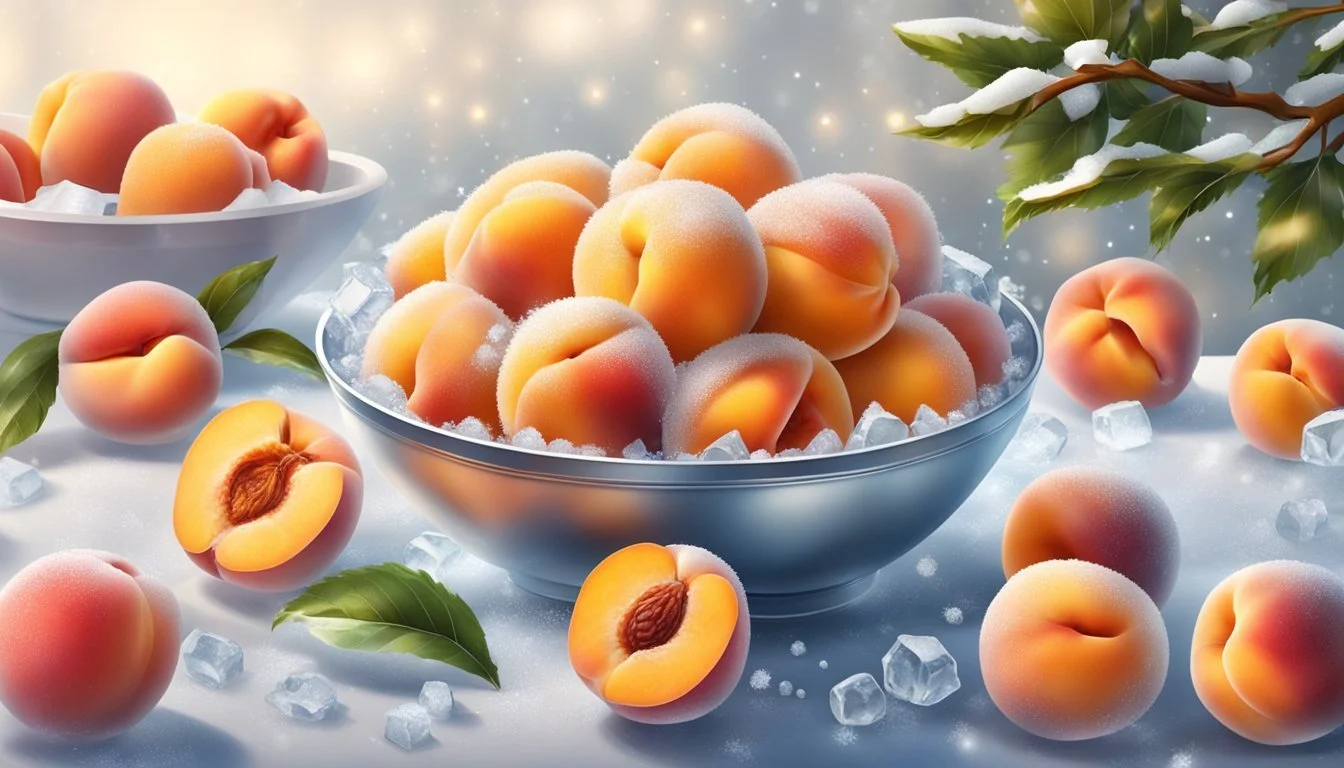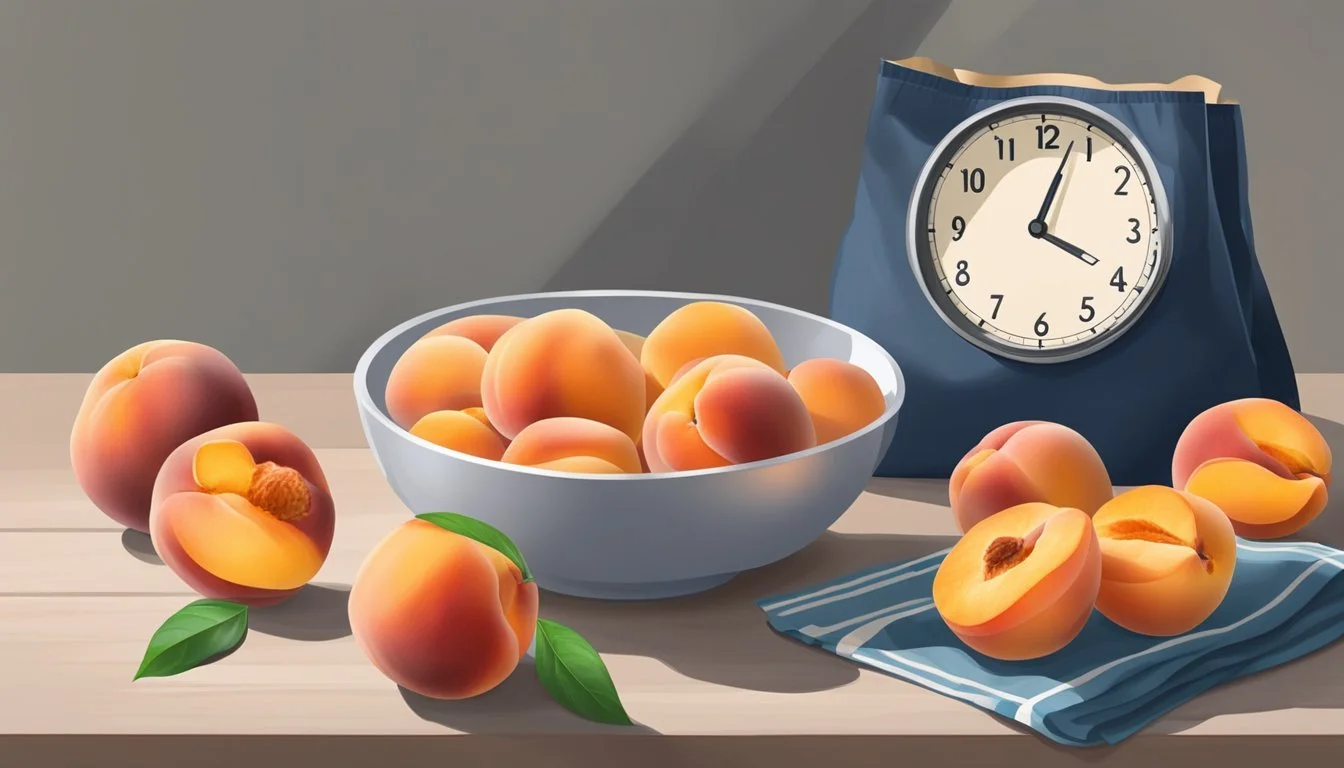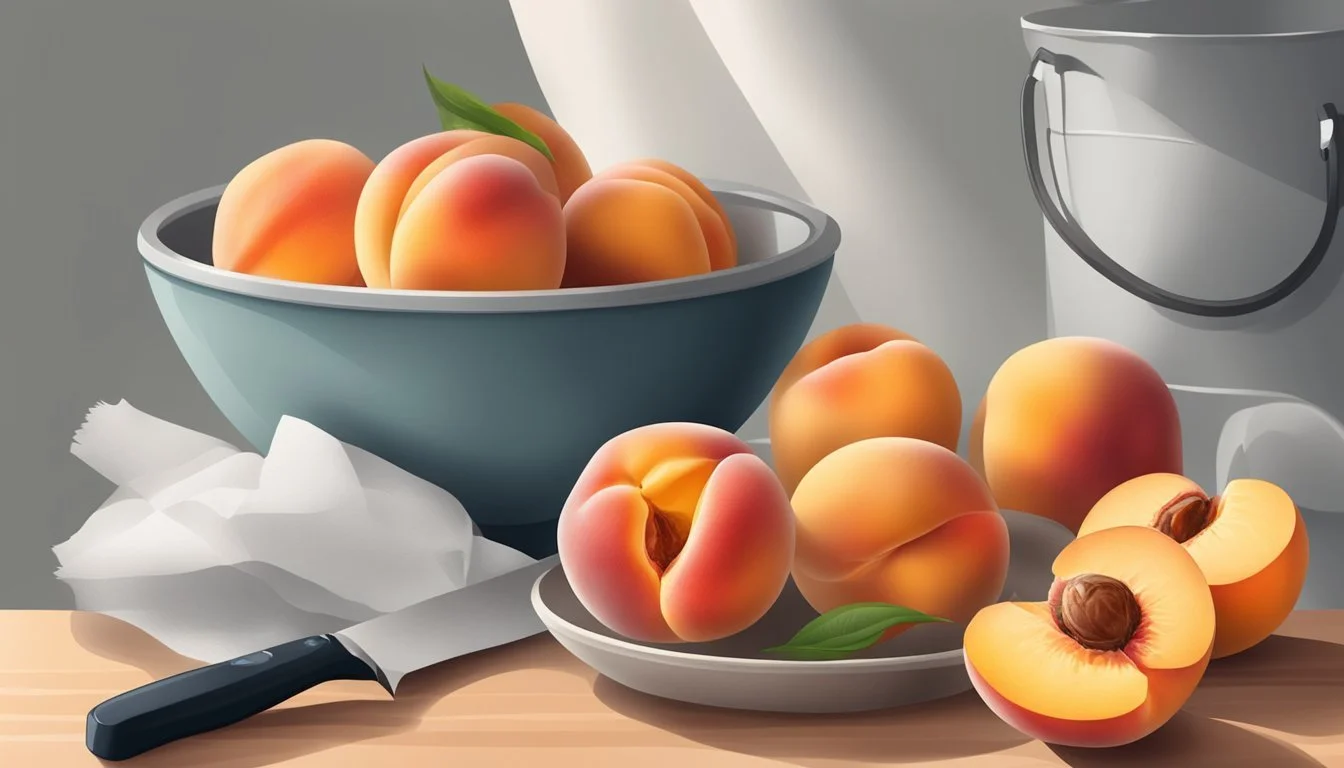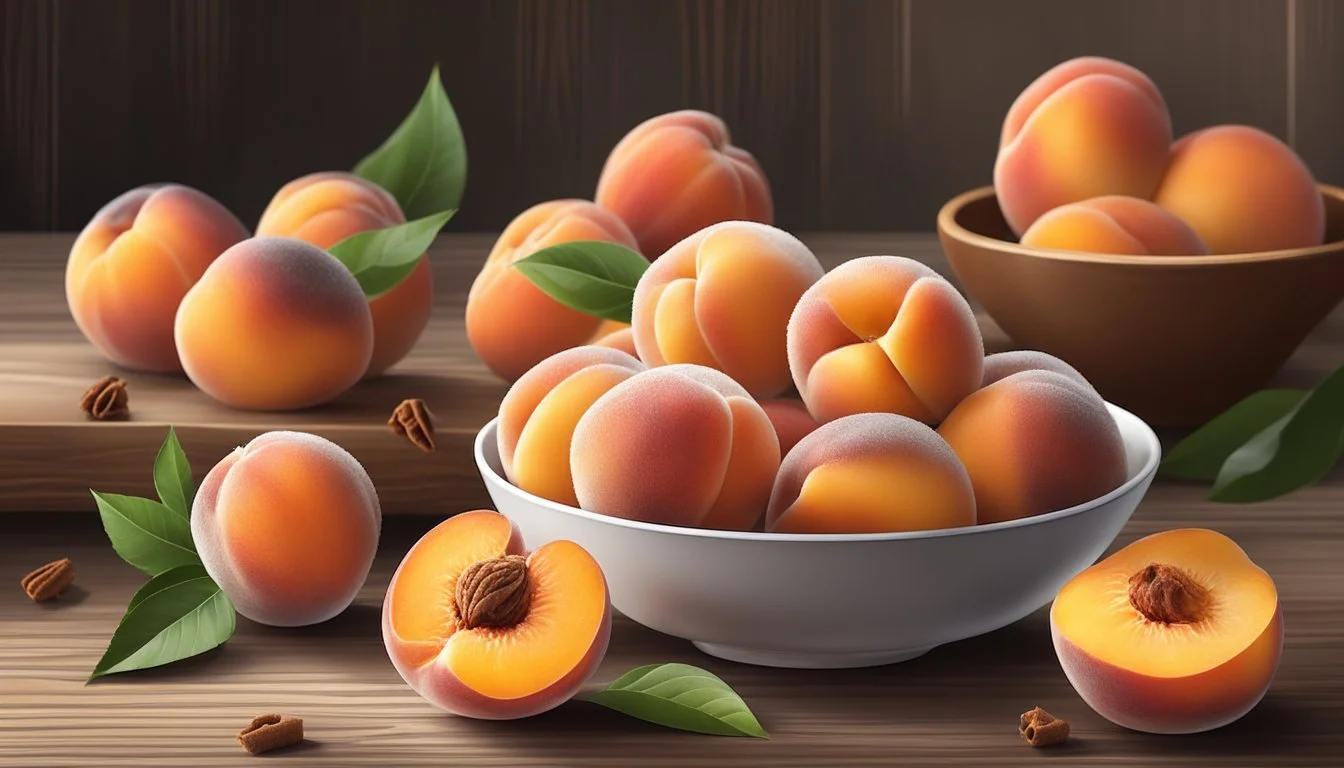Fresh vs Frozen Peaches: Comparing Taste, Nutrition, and Versatility
Peaches are a beloved summer fruit, cherished for their juicy sweetness and versatility in recipes. While fresh peaches offer unparalleled flavor during their peak season, frozen peaches provide a convenient alternative year-round. Both fresh and frozen peaches have their place in the kitchen, with each type offering unique advantages for different culinary applications.
The choice between fresh and frozen peaches often depends on factors such as availability, cost, and intended use. Fresh peaches shine in dishes where texture and appearance are paramount, like fruit salads or as standalone snacks. Frozen peaches, on the other hand, excel in baked goods, smoothies, and cooked desserts where their softer texture becomes an asset.
Considering the cost and convenience, frozen peaches can be a smart choice for many recipes. They are typically more affordable and have a longer shelf life compared to their fresh counterparts. Additionally, frozen peaches are pre-sliced and ready to use, saving time in the kitchen and reducing food waste.
Fresh vs. Frozen Peaches: Understanding the Basics
Fresh and frozen peaches offer distinct characteristics and uses in the kitchen. Each type has its own advantages depending on the season, recipe, and desired outcome.
Definition and Characteristics of Fresh Peaches
Fresh peaches are available at grocery stores and farmers markets during their peak season. These fruits are juicy, ripe, and bursting with flavor when harvested at the right time.
Fresh peaches have a soft, fuzzy skin that can be easily peeled. Their flesh is tender and sweet, with a vibrant aroma. Ripe peaches yield slightly when gently squeezed.
Preparing fresh peaches involves washing, peeling, pitting, and slicing. This process can be time-consuming but rewards cooks with a superior taste and texture.
Fresh peaches are ideal for eating out of hand or using in recipes that showcase their natural flavors and textures.
Definition and Characteristics of Frozen Peaches
Frozen peaches are harvested at peak ripeness and quickly frozen to preserve their flavor and nutritional value. They are available year-round in the frozen fruit section of grocery stores.
These peaches are typically peeled, pitted, and sliced before freezing. Some varieties are packed in sugar or syrup to enhance sweetness and prevent freezer burn.
Frozen peaches require thawing before use. They can be defrosted in the refrigerator overnight or quickly in the microwave.
While frozen peaches may lose some of their original texture, they retain much of their nutritional content and flavor. They are convenient for baking, smoothies, and cooked dishes where texture is less critical.
Nutritional Comparison
Fresh and frozen peaches offer distinct nutritional profiles. The processing and storage methods impact their vitamin, mineral, and nutrient content. Understanding these differences can help consumers make informed choices based on their dietary needs.
Vitamins and Minerals in Fresh Peaches
Fresh peaches are rich in essential nutrients. They contain significant amounts of vitamin C, promoting immune function and skin health. A medium-sized fresh peach provides about 10% of the daily recommended intake of vitamin C.
Fresh peaches also offer vitamin A, crucial for eye health and immune function. They contain potassium, supporting heart health and muscle function. Folate, important for cell growth, is present in modest amounts.
The fiber content in fresh peaches aids digestion and promotes feelings of fullness. A medium peach contains about 2 grams of fiber. Fresh peaches are naturally low in calories and contain no added sugars.
Nutrient Content in Frozen Peaches
Frozen peaches often retain a high nutrient content due to quick freezing after harvest. This process can preserve vitamins and minerals effectively. Vitamin C levels in frozen peaches may be comparable or even higher than in fresh peaches that have been stored for several days.
Frozen peaches maintain their fiber content, providing similar digestive benefits to fresh peaches. The sugar content in frozen peaches is typically natural, with no added sugars unless specified on the packaging.
Some nutrients, like vitamin E, may be slightly reduced in frozen peaches compared to fresh. However, frozen peaches can be a reliable source of antioxidants, which are preserved well during the freezing process.
Frozen peaches offer convenience and consistent nutrient content year-round, making them a practical option for maintaining a balanced diet.
Culinary Applications
Fresh and frozen peaches offer distinct advantages in cooking and baking. Their unique characteristics influence texture, flavor, and preparation methods in various recipes.
Cooking and Baking with Fresh Peaches
Fresh peaches shine in raw applications and dishes where texture is crucial. Sliced or chopped, they add vibrant flavor to salads and salsas. For grilled peaches, halve and pit them before placing on the grill for a caramelized treat.
In baking, fresh peaches work well in pies, cobblers, and cakes. Peeling is often necessary for a smoother texture. To peel easily, blanch peaches in boiling water for 30 seconds, then transfer to an ice bath.
Fresh peaches are ideal for:
Peach pie (4 cups sliced peaches)
Grilled peach halves
Fruit salads
Using Frozen Peaches in Recipes
Frozen peaches offer convenience and year-round availability. They're pre-peeled and sliced, saving prep time. Thaw before using in most recipes, but keep frozen for smoothies.
Frozen peaches work well in:
Smoothies (1 cup per serving)
Baked goods (muffins, quick breads)
Cobblers and crisps
Jam and preserves
For pies, use frozen peaches without thawing to prevent excess liquid. Increase baking time slightly. In most recipes, frozen peaches can substitute for fresh at a 1:1 ratio.
Frozen peaches maintain flavor well but may have a softer texture when thawed. This makes them ideal for purées, sauces, and blended desserts.
Preservation and Storage Techniques
Proper preservation and storage techniques help maintain the quality and flavor of peaches. Fresh peaches require careful handling, while freezing offers a way to enjoy peaches long after the season ends.
Storing Fresh Peaches for Longevity
Ripe peaches need immediate attention to prevent spoilage. Store them at room temperature, away from direct sunlight. Place peaches in a single layer, stem-side down, to avoid bruising. For slightly firm peaches, leave them on the counter to ripen for 1-3 days.
Once ripe, refrigerate peaches to extend their life by up to 5 days. Arrange them in a single layer in the crisper drawer, separated by paper towels to absorb excess moisture.
During peach season, proper storage is crucial. Wash peaches only before eating to prevent mold growth. If you notice any signs of decay, remove the affected fruit promptly to prevent spread.
Freezing Peaches: Methods and Tips
Freezing peaches preserves their flavor for months. Start by selecting ripe, unblemished fruit. Wash and dry the peaches thoroughly. Peel the skin if desired, though it's not necessary.
For easy peeling, blanch peaches in boiling water for 30 seconds, then transfer to an ice bath. The skin should slip off easily.
Slice peaches and remove pits. To prevent browning, toss slices with lemon juice or ascorbic acid solution. Pack peaches using one of these methods:
Dry pack: Freeze slices on a tray, then transfer to freezer bags.
Sugar pack: Toss slices with sugar before freezing in containers.
Syrup pack: Cover slices with a sugar syrup solution in freezer-safe containers.
Leave headspace in containers for expansion during freezing. Properly frozen peaches can last up to 12 months.
Comparative Shelf Life and Convenience
Fresh and frozen peaches offer different advantages in terms of storage duration and ease of use. The choice between them depends on factors like seasonality, intended use, and personal preferences.
Fresh Peaches: Expected Shelf Life
Fresh peaches from the grocery store or farmers market typically last 3-5 days at room temperature. When refrigerated, they can stay good for up to a week. Peak season peaches may have slightly longer shelf lives due to their freshness.
To extend their lifespan, store peaches in a single layer, stem-side down. Avoid washing them until ready to eat. Ripe peaches should be consumed quickly for best flavor and texture.
Frozen Peaches: Benefits in Convenience
Frozen peaches can last up to 12 months in the freezer when stored properly. This extended shelf life makes them a convenient option year-round, especially outside of peak season.
Frozen peaches come pre-peeled and pitted, saving time and effort in preparation. They're ideal for smoothies, baking, and cooking, as they maintain their flavor and nutritional value.
Thawing frozen peaches is simple. Place them in the refrigerator overnight or use the defrost setting on a microwave for quicker results. For smoothies, frozen peaches can be used directly without thawing.
Many supermarkets offer a variety of frozen peach options, including sliced, diced, and whole peaches. This versatility makes them suitable for various recipes and cooking methods.
Impact on Taste and Texture in Cooking
Fresh and frozen peaches offer distinct qualities when used in cooking. Their differences in texture and flavor can significantly influence the outcome of various dishes.
Texture Variations Between Fresh and Frozen Peaches
Fresh peaches provide a firmer texture, ideal for recipes where fruit integrity is crucial. They hold up well in fruit salads and grilled preparations.
Frozen peaches tend to be softer upon thawing. This can be advantageous in baked goods like muffins or cakes, where a more uniform texture is desired.
For pies and cobblers, frozen peaches may release more liquid during cooking. To compensate, adding a thickener like cornstarch or flour can help achieve the desired consistency.
Flavor Differences in Peach Dishes
Fresh peaches offer a bright, juicy flavor when in season. They shine in raw applications and lightly cooked dishes where their natural sweetness is showcased.
Frozen peaches are picked at peak ripeness and flash-frozen, preserving their flavor. They work well in cooked desserts like peach pie or cobbler.
In baked goods, frozen peaches may require less added sugar, as the freezing process can concentrate their natural sweetness.
For custard-based recipes, frozen peaches can provide a more consistent flavor throughout the year. Their softer texture blends seamlessly into custard fillings.
Alternatives to Fresh and Frozen
Canned and dried peaches offer convenient options when fresh or frozen varieties are unavailable. These alternatives provide unique textures and flavors while extending shelf life.
Canned Peaches: A Ready-to-Use Option
Canned peaches offer convenience and year-round availability. They come packed in syrup or juice, providing sweetness and moisture.
Canning preserves peaches through heat processing, which softens the fruit and alters its texture. This makes canned peaches ideal for baking, smoothies, and desserts.
Most canned peaches contain added sugar and preservatives to enhance flavor and extend shelf life. However, some brands offer no-sugar-added options packed in water or juice.
One 16-ounce can of peaches typically equals about 2 cups of sliced fruit. This equivalency makes recipe conversions simple when substituting for fresh or frozen peaches.
Dried Peaches and Other Fruits
Dried peaches concentrate flavors and nutrients while offering extended shelf life. They provide a chewy texture and intense sweetness.
Drying removes moisture, creating a product that's portable and resistant to spoilage. Dried peaches can be eaten as snacks or rehydrated for use in recipes.
Other dried fruits like apricots and cherries can substitute for peaches in some dishes. These alternatives offer similar sweetness and chewy textures.
Dried fruits often contain added sugar to enhance flavor and preservation. However, unsweetened varieties are available for those seeking lower sugar options.
One pound of dried peaches yields approximately 5 1/4 cups when cooked, making them a concentrated alternative to fresh or frozen fruit.
Creative Uses in Sweet and Savory Dishes
Peaches lend themselves to a variety of culinary applications, from classic desserts to unexpected savory pairings. Their versatility shines in both sweet and savory dishes, offering a burst of flavor and natural sweetness.
Savory Pairings with Fresh and Frozen Peaches
Fresh peaches pair exceptionally well with pork, adding a sweet contrast to savory meats. Try grilling peach halves alongside pork chops for a delicious summer meal.
For a quick and flavorful side dish, combine diced peaches with tomatoes, red onion, and cilantro to create a vibrant peach salsa. This pairs wonderfully with grilled chicken or fish.
Frozen peaches can be blended into smoothies or pureed into sauces for roasted meats. Their natural sweetness balances well with savory herbs like rosemary or thyme.
Consider incorporating peaches into salads. A salad of arugula, peaches, and crumbled blue cheese offers a perfect balance of peppery, sweet, and tangy flavors.
Desserts and Sweet Treats
Classic peach cobbler remains a favorite dessert, easily made with fresh or frozen peaches. Top with a scoop of vanilla ice cream for the ultimate summer treat.
For a simple yet elegant dessert, poach peaches in white wine and honey. Serve warm with a dollop of whipped cream or mascarpone.
Peach ice cream is a refreshing treat. Blend ripe peaches with cream, sugar, and a touch of lemon juice for a homemade version.
Try grilling peach halves and drizzling them with maple syrup and a sprinkle of cinnamon. This quick dessert highlights the fruit's natural sweetness.
Peach crisp offers a delightful alternative to cobbler. Top sliced peaches with a mixture of oats, brown sugar, and butter for a crunchy contrast.






